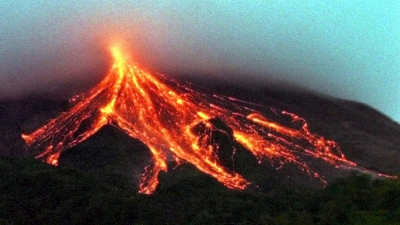
We all know the basics of volcanoes. They are spots on the Earth’s crust from where molten rock, volcanic Ash and certain gases can escape from an underground chamber. The molten rock is called magma when it is below the ground and lava when it erupts and may start flowing across the Earth’s surface. Volcanoes are broadly classified as active, dormant and extinct, based on their activity.
This much is well known and part of our textbooks. But a group of scientists revealed in 2020 certain explosive secrets that volcanoes had so far hidden deep underneath. They were able to show that volcanoes whose eruptions have been consistent actually hide chemically diverse magma underground with the potential to thereby generate explosive activity.
They did this by studying two Galapagos volcanoes that have erupted compositionally anion lava flows throughout their lifetimes. But after studying the compositions of microscopic crystals in the lavas, the reconstructed characteristics of magmas was contrary to expectations.
As opposed to the monotonous lavas that erupted at the surface level. magmas were extremely diverse. including compositions similar to the most violent of volcanic eruptions in history. This implies that volcanoes that for millennia have erupted a certain way actually have the ability to undergo inspected changes.
Knowing this is important because hazard evaluation and evacuation models currently employed have worked under certain assumptions. By realising that just because a volcano has erupted a particular way in the past doesn’t necessarily mean it will continue that way indefinitely in the future, we can better assess the risks posed by them.
Picture Credit : Google
